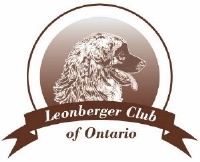|
A Brief History of the Leonberger
Breed
In the late 1860’s the new breed made its first official public appearance at the Oktoberfest in Munich and immediately became popular with 19th century royalty. In fact, until his death in 1889, Essig exported more than 300 dogs to the courts of various Kings, Queens and noblemen throughout Europe. The Prince of Wales, Emperor Napoleon II, Garibaldi, the King of Belgium, Bismarck, and King Umberto of Italy all owned Leonbergers. And Empress Elizabeth of Austria, who acquired her first of seven Leonbergers in 1870, was such a devotee of the breed that the marble monument that was built in her memory in Vienna depicts her on a throne flanked by two Leonbergers at her feet. Leonbergers were first imported to America as early as the 1860’s. However, both World Wars wreaked havoc on these majestic creatures. To compound things, all written records of the breed were destroyed following World War 1. Had it not been for the dedication of a few breeders in Germany who made it their mission to track down Leonbergers with the task of rebuilding the breed, these wonderful dogs would have become extinct. Therefore, it is only through the commitment and persistence of these individuals in Germany that we have our breed today. |
|
|
|
|
|
Page Last Updated May 29, 2011 |
|
|
Visitor # /
|
|
Leonberger Club of Ontario
 The history of the Leonberger
Dog is a very interesting one that begins in the mid 1800’s with a
gentleman by the name of Heinrich Essig. Herr Essig was a prominent
citizen and City Councillor in the town of Leonberg, Germany. He was
also an ardent zoophile who had a passion for collecting animals of
all kinds. Because large, impressive dogs were very popular throughout
Europe at that time, Essig set out to breed a dog which resembled a
lion, the town’s symbol. Though there is no written proof of the exact
date, it is said that in 1846 he attained the desired appearance by
crossing the long haired Saint Bernard Dog with a Landseer
Newfoundland Dog. He later brought in the Pyrenean Mountain Dog, also
known as the Great Pyrenees. From these matings, Essig claimed to have
produced the strength, loyalty, tracking ability, body and good nature
of the Saint Bernard, the agility, liveliness and ability to swim of
the Newfoundland, with the fine hearing and sight of the Pyrenean.
The history of the Leonberger
Dog is a very interesting one that begins in the mid 1800’s with a
gentleman by the name of Heinrich Essig. Herr Essig was a prominent
citizen and City Councillor in the town of Leonberg, Germany. He was
also an ardent zoophile who had a passion for collecting animals of
all kinds. Because large, impressive dogs were very popular throughout
Europe at that time, Essig set out to breed a dog which resembled a
lion, the town’s symbol. Though there is no written proof of the exact
date, it is said that in 1846 he attained the desired appearance by
crossing the long haired Saint Bernard Dog with a Landseer
Newfoundland Dog. He later brought in the Pyrenean Mountain Dog, also
known as the Great Pyrenees. From these matings, Essig claimed to have
produced the strength, loyalty, tracking ability, body and good nature
of the Saint Bernard, the agility, liveliness and ability to swim of
the Newfoundland, with the fine hearing and sight of the Pyrenean.
